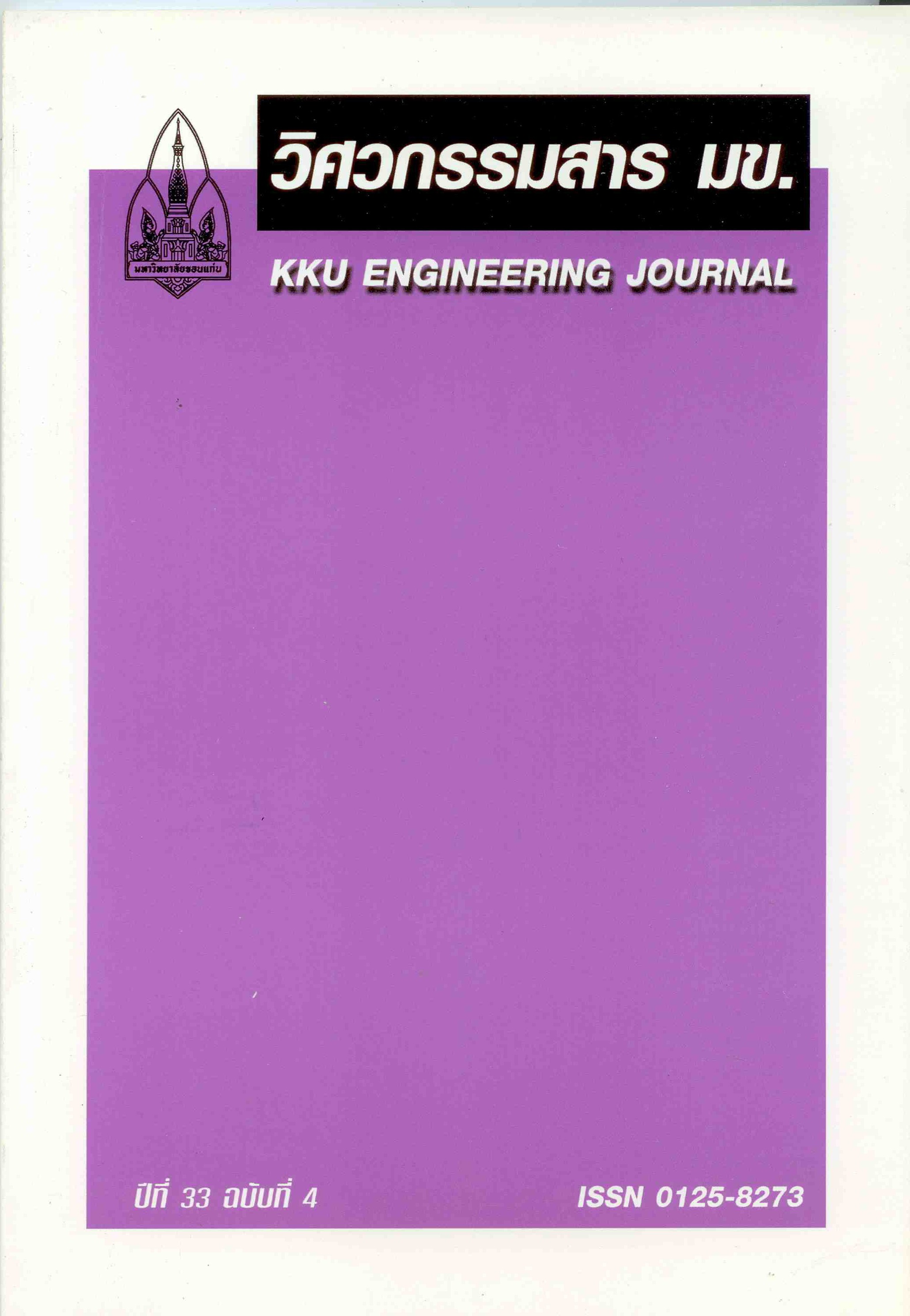A mathematical model on heat transfer and humidity in a house with Aerated Concrete Wall under the climate of Thailand
Main Article Content
Abstract
This paper aimed to study a mathematical model on the thermal performance of a house with
aerated concrete wall under the climate of Thailand. First the mathematical model was developed,
and then compared its calculations with the result from the experimental house of 13 m3 area. House
wall was autoclaved aerated concrete (AAC) with unplastered concrete on both internal and external
sides. Each wall area was about 2.4m x 2.3 m with thickness of 0.07 m. Roof was made of gray color
concrete tiles with inclination angle of 30o to the horizontal. Aluminum foil sheets were constructed
to reflect heat in sunroof room. Gypsum ceiling were well insulated to minimize the heat from the
sunroof room transferring into the experimental room. The studied parameters in the experimental
house consisted of external wall temperature, middle wall temperature, internal wall temperature, air
temperature, relative humidity and the specific humidity of air in the experimental room.
According to the comparison between the calculation and the experiment, it was found that
the results were in close agreement. So this mathematical model could predict well the thermal
performance of a house under difference conditions.
aerated concrete wall under the climate of Thailand. First the mathematical model was developed,
and then compared its calculations with the result from the experimental house of 13 m3 area. House
wall was autoclaved aerated concrete (AAC) with unplastered concrete on both internal and external
sides. Each wall area was about 2.4m x 2.3 m with thickness of 0.07 m. Roof was made of gray color
concrete tiles with inclination angle of 30o to the horizontal. Aluminum foil sheets were constructed
to reflect heat in sunroof room. Gypsum ceiling were well insulated to minimize the heat from the
sunroof room transferring into the experimental room. The studied parameters in the experimental
house consisted of external wall temperature, middle wall temperature, internal wall temperature, air
temperature, relative humidity and the specific humidity of air in the experimental room.
According to the comparison between the calculation and the experiment, it was found that
the results were in close agreement. So this mathematical model could predict well the thermal
performance of a house under difference conditions.
Article Details
How to Cite
Ungkoon, Y., Namprakai, P., Pratinthong, N., & Sarachitti, R. (2013). A mathematical model on heat transfer and humidity in a house with Aerated Concrete Wall under the climate of Thailand. Engineering and Applied Science Research, 33(4), 375–390. retrieved from https://ph01.tci-thaijo.org/index.php/easr/article/view/6004
Issue
Section
ORIGINAL RESEARCH
This work is licensed under a Creative Commons Attribution-NonCommercial-NoDerivatives 4.0 International License.



